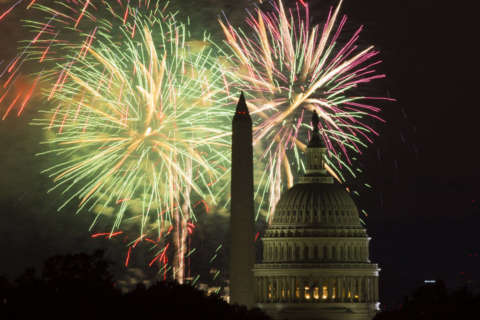WASHINGTON — Leave the fireworks to the professionals.
That’s advice from a man who’s quite familiar with the injuries they can inflict: Dr. Raymond Pensy, a trauma orthopedic surgeon at the University of Maryland R Adams Cowley Shock Trauma Center in Baltimore.
“Having been around long enough in the medical profession, and seeing injured people like this,” he said, “I think that me and my four children … can enjoy the fireworks just as much going to a nice display.”
Burns are the most-common fireworks injury, Pensy said. Approximately 2,000–3,000 of such fireworks injuries are brought into emergency rooms across the U.S. and are most frequently caused by sparklers.
“Most would think [they] are relatively innocuous or relatively harmless-type fireworks, but those are responsible far and away for the most-common injury, which are burns to the hands, eyes and face,” he told WTOP.
Blast injuries are all too common as well, he said, and it doesn’t take much power to do damage. If a small firecracker detonates in a closed hand, it can result in a loss of “parts or all of the hand in unfortunate circumstances.”
Even if, for example, amateurs are doing a neighborhood display and trying to be responsible by keeping a safe distance, fireworks can be tipped over, which can result in projectiles firing into a crowd.
The risk, in other words, just isn’t worth it.
“Every year, time and time again, we revisit the same problem, and I think it’s why it’s important to bring this to attention to the public every year — reminding them that … fireworks are best left to the professionals,” Pensy said.








